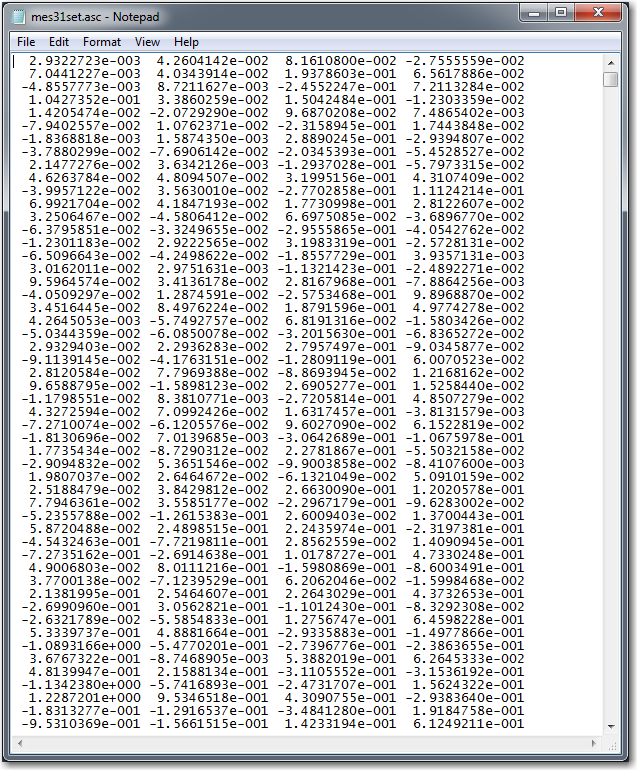The ASCII data file format is the most commonly used file format for measurement files. It is a general text format that can be imported e.g. into Microsoft Excel or MATLABTM (MathWorks Inc). It is the similar way MATLABTM stores a data matrix in an ASCII file.
The measurements of a specific transducer are stored as a single column in the ASCII file. So the data in the ASCII file can be interpreted as a matrix whose columns are the different transducers and the rows the measurements of these.
An example (Examples Folder: \Building Model\Mes31set.asc) of a data file is shown below:

In this case there are four columns corresponding to four transducers and rows which corresponds to the samples of the transducers. The measurements of the first transducer is column number 1 from the left.
The following should noted:
All transducers must have the same number of samples.
There can be other information in the beginning of the file, such as a header.
Formatting such as scientific or fixed formats are allowed.
The delimiters between the samples should be either blank spaces or tabs.
The table below list all available formats of the current version:
| Extension | Description |
| txt / asc | Text file format, as described above |
| bin | SVS binary file format |
| uff / unv | Universal File Format. (Data set #58) |
| hdr | TEAC Header file format (TAFFMat) |
| ghf | GeoSIG Header File Format (TAFFMat) |
| gsdat | GeoSIG Data Stream File Format |
| dat | Diadem Header File Format |
| csv | Kyowa Header File Format |
| evt | Kinemetrics Altus File Format |
| wav | Wave file format, (16 bit uncompressed) |
| tad | Terrascience (Weir Jones) data file format |
| vif | VDAS input file format |
| lvm | LabView measurement file format |